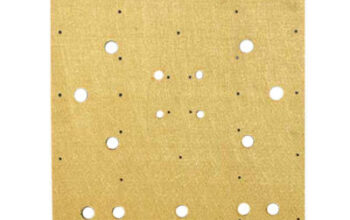In the contemporary dialogue surrounding environmental sustainability, the concept of “green building” emerges as a beacon, illuminating the interstice between architectural innovation and ecological stewardship. This paradigm transcends mere aesthetics; it represents a holistic approach to the built environment, akin to an organism thriving in symbiosis with its surroundings. In essence, green building seeks not just to minimize damage, but to foster harmony with nature, creating spaces that breathe vitality into communities and the ecosystems they disrupt. The allure of green building lies in its multifaceted principles, which holistically integrate sustainability across various domains.
At its core, green building encompasses a myriad of practices aimed at reducing the environmental impact of construction and ongoing building operations. The metaphor of a well-tuned orchestra is apt here: each component—from site selection to material choice—works in synchrony to produce a harmonious outcome. Consider the site selection process. A green building often begins its life journey with an acute awareness of its surroundings, akin to a dancer attuned to the rhythm of the stage. Optimal site selection not only mitigates habitat destruction but also enhances energy efficiency. Proximal access to public transport and local amenities reduces reliance on fossil fuels, engendering a lighter ecological footprint.
Furthermore, the architectural design of green buildings is marked by an emphasis on passive solar techniques, which serve to harness rather than hinder the sun’s natural energy. Through strategically placed windows and overhangs, architects choreograph an intimate dance between light and shadow, ensuring that the internal climate remains temperate without recourse to excessive heating or cooling. This aspect of design is a testament to the profound understanding of natural phenomena that architects wield, crafting edifices that are as much about functionality as they are about reverence for the planet.
Materials selection further illustrates the green building ethos. The use of sustainably sourced materials, akin to the careful selection of ingredients in a fine recipe, underscores the dedication to reducing waste and fostering renewability. This includes reclaimed timber, recycled metals, and low-VOC (volatile organic compound) paints. These materials not only enhance indoor air quality but also reduce the carbon footprint associated with traditional building materials. The appeal of using such materials lies in their inherent stories—each piece a testament to responsible stewardship and a commitment to future generations.
In addition to sustainable materials, the concept of life cycle assessments (LCA) plays a pivotal role in the green building narrative. Each stage of a building’s life, from cradle to grave, is evaluated to ascertain its overall environmental impact. This meticulous analysis parallels the scholarly rigor of scientific inquiry, encompassing resource extraction, manufacturing, transportation, usage, and eventual disposal. By employing LCA, designers and builders can make informed decisions that support a sustainability continuum, ensuring even the most mundane aspects of construction align with eco-friendly principles.
Water usage remains another critical consideration within green building initiatives. Green buildings integrate systems for rainwater harvesting and greywater recycling, akin to how nature perpetually cycles its own resources. Such strategies not only alleviate pressure on municipal water supplies but also decrease the energy encapsulated in water transport and treatment. As climate change exacerbates drought conditions in various regions, the importance of such sustainable practices is increasingly clear, positioning green buildings as pioneering solutions to contemporary challenges.
Moreover, energy efficiency emerges as a cornerstone principle of green building. Buildings are increasingly outfitted with renewable energy systems, such as photovoltaic panels and geothermal heating, transforming them from mere consumers of energy into active producers. This reflective journey towards energy independence encapsulates the notion of stewardship—where structures serve both their inhabitants and the planet. With advancements in technology, the prospect of net-zero energy buildings—a model where the amount of energy consumed is equivalent to the amount produced on-site—is not just aspirational; it is becoming a burgeoning reality.
The unique appeal of green building also extends to the social realm. These structures are not just places to reside or work; they are designed to foster community interaction and enhance well-being. Green spaces and communal areas within building design resonate with the age-old understanding of nature as a restorative force. Evidence suggests that environments imbued with natural elements can bolster physical health, reduce stress, and enhance mental acuity. This recognition of the intrinsic connection between our built and natural environments represents a significant evolution in architectural philosophy, emphasizing quality of life as a fundamental objective.
In conclusion, green building transcends conventional architecture, emerging as a crucial paradigm in the quest for environmental sustainability. Like a tapestry woven with threads of innovation, conservation, and community, it reflects the interconnectedness of modern life and the natural world. By embracing practices that prioritize ecological balance, material responsibly, and user health, green building offers an intriguing glimpse into a future where our creations harmonize with the earth. As societies grapple with the profound implications of climate change, the discourse around green building will undoubtedly gain further momentum, urging architects, builders, and occupants alike to envision spaces that are not only functional but also regenerative, nurturing both humanity and the planet for generations to come.












